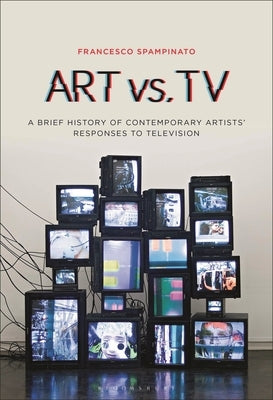Description
The artists discussed belong to different generations: those that emerged in the 1960s in association with art movements such as Pop Art, Fluxus and Happening; and those appearing on the scene in the 1980s, whose work aimed at deconstructing media representation in line with postmodernist theories; to those arriving in the 2000s, an era in which, through reality shows and the Internet, anybody could potentially become a media personality; and finally those active in the 2010s, whose work reflects on how old media like television has definitively vaporized through the electronic highways of cyberspace.
These works and phenomena elicit a tension between art and television, exposing an incongruence; an impossibility not only to converge but at the very least to open up a dialogical exchange
Author: Francesco Spampinato
Publisher: Bloomsbury Academic
Published: 07/27/2023
Pages: 368
Binding Type: Paperback
Weight: 1.08lbs
Size: 9.00h x 6.00w x 0.76d
ISBN13: 9781501370540
ISBN10: 1501370545
BISAC Categories:
- Performing Arts | Television | History & Criticism
- Art | History | Contemporary (1945- )
About the Author
Francesco Spampinato is Associate Professor at the University of Bologna, Italy. His research in contemporary art history and visual studies focuses on the relationships between contemporary art, media, and technology, with particular attention to topics such as postmodernism, collective practices and electronic culture. He is the author of Come Together: The Rise of Cooperative Art and Design (2015), Can You Hear Me? Music Labels by Visual Artists (2015), Art Record Covers (2017), and Art Vs. TV: A Brief History of Contemporary Artists' Responses to Television (Bloomsbury 2022). He has edited the monographs GMM - Giovanotti Mondani Meccanici: Computer Comics 1984-1987 (2021) and Ran Slavin: Shapeshifter (2022) and co-edited the anthology, The Pandemic Visual Regime: Visuality and Performativity in the COVID-19 Crisis (2023). His articles have been published in academic journals such as NECSUS, PAJ, Senses of Cinema, the Stedelijk Studies, and Visual Culture Studies, as well as magazines such as Abitare, Blueprint, DIS, Flash Art, Kaleidoscope, and Mousse.

